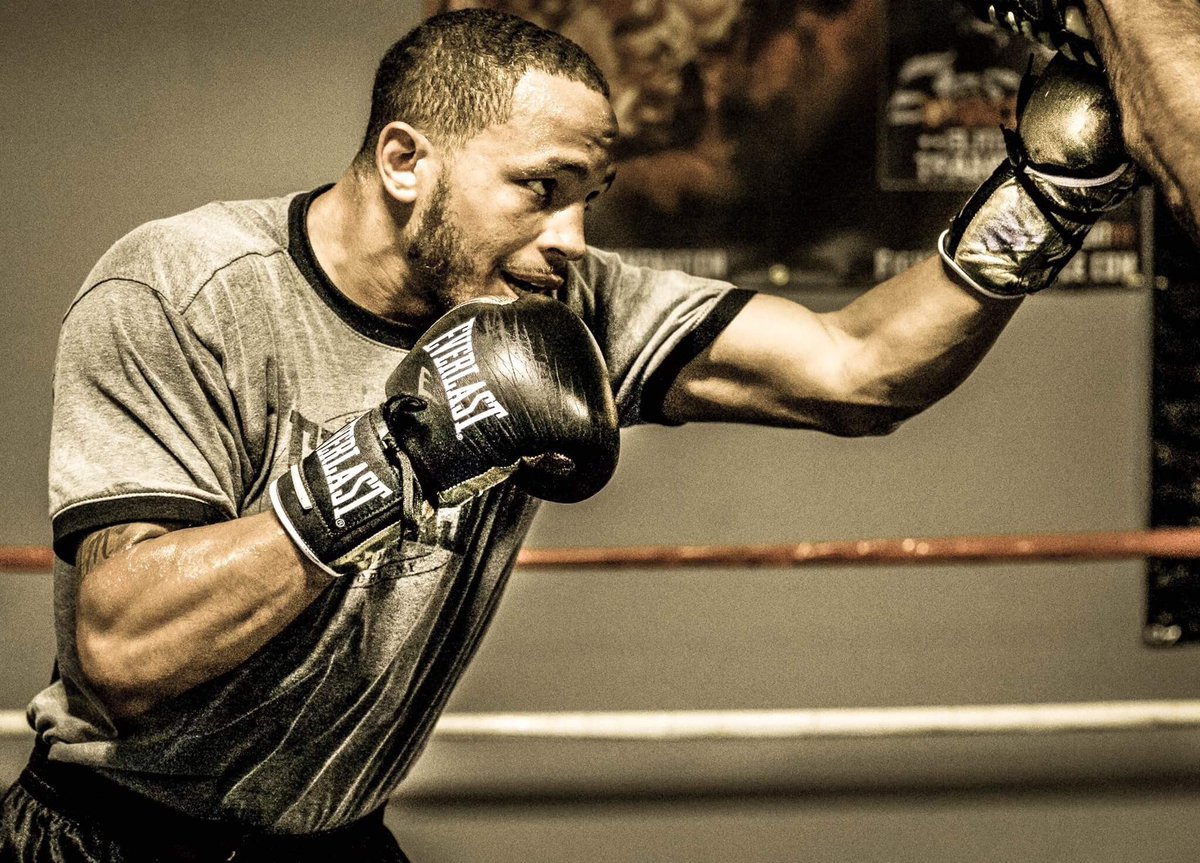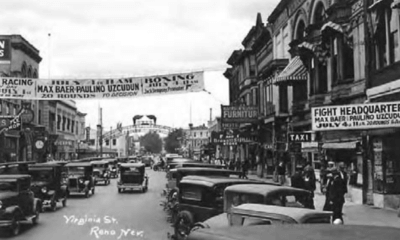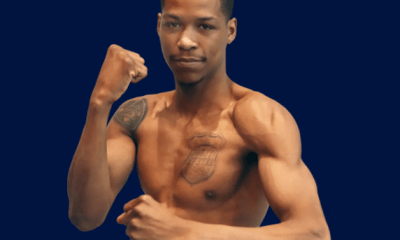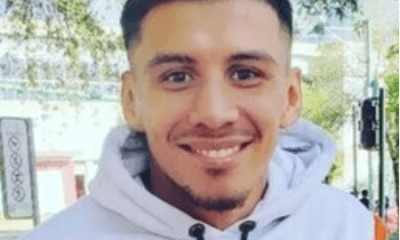Argentina
An Unexpected Development Has Rob Brant Poised to Become a Force at 168

Looking at the “opening day” rosters for the double-barreled World Boxing Super Series, a 16-man lineup, it appears that Rob Brant was an after-thought. As the fields were being finalized, it dawned on the selection committee that there wasn’t a single fighter in either bracket who was actually born and bred in the United States. “Hey, this won’t look right,” someone said, “who can we find to fill the void?” Whereupon Brant, who had been making headway as a middleweight, said, “Hey fellows, I’ll give it a go. I’m too small for the cruiserweight tourney, so plug me in to the 168-pound division.”
And so they did, which brings us to Friday, Oct. 27, when Rob Brant (22-0, 15 KOs) locks horns with Juergen Braehmer (48-3, 35 KOs) in the historic German town of Schwerin in the final quarterfinal match in the less appealing of the two WBSS tournaments.
A strange set of circumstances opened the WBSS door to Rob Brant. It began when the World Boxing Association, in their infinite wisdom, elevated Gennady Golovkin into a “super” world middleweight champion. That left their “regular” title conveniently vacant. The WBA tabbed Hassan N’Dam and Ryota Murata to compete for the vacant belt and named Brant the mandatory challenger – he would get to fight the winner.
N’Dam and Murata met on May 20, 2017, on Murata’s turf in Tokyo. N’Dam emerged victorious, winning a split decision. Judge Raul Caiz Sr., imported from California, had it 117-110 for Murata, but his Panamanian and Canadian counterparts dissented and the French-Cameroonian walked away with the belt.
The decision was so outrageous that the WBA apologized, slapped the two errant judges with six-month suspensions, and ordered an immediate rematch (which will transpire this Sunday). And that left Rob Brant unencumbered, free to say “yes” without rearranging his schedule when the WBSS came calling. And should he go on to win his bracket, he stands to collect a lot more loot than if fate hadn’t intervened in the form of two blundering judges.
Brant hails from St. Paul, Minnesota. Many years ago, St. Paul was a hot fight town. The Gibbons brothers, Mike and Tommy, came from St. Paul, as did their contemporaries Mike O’Dowd and Billy Miske. All four are enshrined in the International Boxing Hall of Fame. During the 1950s, St. Paul’s fighting Flanagan brothers, Glen and Del, energized the local scene, with Del rising as high as #2 in the middleweight rankings of The Ring magazine. But since then, save for a brief flurry in the late 1970s when Minnesota-bred heavyweights Duane Bobick and Scott LeDoux were making waves, the Minnesota boxing scene has been largely dormant.
As an 18-year-old amateur, competing at 178 pounds, Brant became the first member of his boxing club to win a national title. After coming up short in the 2012 Olympic trials, he turned pro.
Brant would prove to be a good draw in his home state, but the times had changed. Instead of packing them in at an auditorium in St. Paul or neighboring Minneapolis, he and his stablemate Jamal James, once they had taken their baby steps, steered their growing legions of fans to an Indian casino 75 miles north of the Twin Cities in the little town of Hinckley. Seven of Brant’s last 11 fights were staged here. His most recent fight, a mere tune-up, drew an SRO crowd.
It was inevitable that the day would come when Brant would have to leave Minnesota to advance his career. There just aren’t enough good sparring partners in this neck of the woods. Several years ago, it became his habit to apply the finishing touches to his training for a particular fight at Derrick James’ gym in Dallas. (This is a hot barn in case you haven’t noticed. James also trains Jermell Charlo and Errol Spence Jr.; Brant has sparred with both). Brant and his girlfriend recently purchased a home in the Dallas area.
When we last googled Rob Brant, we found him in Copenhagen where he was practicing his craft at the gym founded and still owned by German boxing behemoth Team Sauerland, one of the driving forces behind the World Boxing Super Series. Several good super middleweights train here, most notably former WBA and WBC 168-pound kingpin Mikkel Kessler whose planned fall comeback was pushed back when it was discovered that he had contracted Lyme disease and 168-pound hopeful Patrick Nielsen (29-2 after losing a crossroads fight to John Ryder last week). Nielsen is a southpaw, as is Juergen Braehmer.
Brant should feel at home in Copenhagen. Most native-born Danes are fluent in English and the gym has a strong American flavor. The head trainer, Joey Gamache, briefly a 130- and 135-pound world titlist, hails from Lewiston, Maine. Assisting him is old salt Jimmy Montoya, a jack-of-all-trades who was a fixture on the West Coast boxing scene in the 1970s and ‘80s.
JUERGEN BRAEHMER
Juergen Braehmer, who turned 39 this month, has fought exclusively in Germany which will certainly cost him if his name ever appears on the ballot for the International Boxing Hall of Fame. However, he needs no introduction to fight fans in Europe. He won the WBA light heavyweight title in 2013 and made six successful defenses before losing the belt to Nathan Cleverly in his last start. Perhaps his best showing during his title reign came against Pawel Glazewski who he eliminated in 55 seconds with a body punch.
Braehmer avenged his first loss, a narrow setback in 2006 at the hands of countryman Mario Veit. His other defeats were on points to Argentina’s Hugo Hernan Garay in his first stab at a world title and to the aforementioned Cleverly in a fight he was winning on all three scorecards when he was forced to withdraw after six rounds with a dislocated elbow. He has been inactive since that bout in October of last year.
There’s a huge gap in experience between Braehmer and Brant. The German has answered the bell for 291 rounds; Brant only 75. In his last four starts, Brant answered the bell for only nine rounds. It would also seem to matter greatly that the fight is in Braehmer’s hometown. If it goes the distance, as it likely will, it seems inevitable that at least one of the judges will score the bout with his ears.
Nonetheless, we favor the young lion in a fight that has the classic look of a changing of the guard. Braehmer began his career as a super middleweight but last fought at 168 in 2007. It’s virtually unprecedented for a man of his age to move down a weight class to a weight he last carried a decade ago. Brant is moving up in weight, but he fought at 178 as an amateur and the additional pounds may actually benefit him. Plus he’s quicker and Braehmer’s reflexes have undoubtedly dulled.
Juergen Braehmer has had a long association with Sauerland. We have a nagging suspicion that the powerful promotional entity put Braehmer in this tournament not because they had any expectation that he could win, but as a parting gift to an old friend. We’ll find out on Oct. 27.
Check out more boxing news on video at The Boxing Channel
-

 Featured Articles3 weeks ago
Featured Articles3 weeks agoAvila Perspective, Chap. 330: Matchroom in New York plus the Latest on Canelo-Crawford
-

 Featured Articles2 weeks ago
Featured Articles2 weeks agoVito Mielnicki Jr Whitewashes Kamil Gardzielik Before the Home Folks in Newark
-

 Featured Articles4 weeks ago
Featured Articles4 weeks agoOpetaia and Nakatani Crush Overmatched Foes, Capping Off a Wild Boxing Weekend
-

 Featured Articles3 weeks ago
Featured Articles3 weeks agoCatching Up with Clay Moyle Who Talks About His Massive Collection of Boxing Books
-

 Featured Articles4 weeks ago
Featured Articles4 weeks agoFabio Wardley Comes from Behind to KO Justis Huni
-

 Featured Articles2 weeks ago
Featured Articles2 weeks agoMore Medals for Hawaii’s Patricio Family at the USA Boxing Summer Festival
-

 Featured Articles3 weeks ago
Featured Articles3 weeks agoThe Shafting of Blair “The Flair” Cobbs, a Familiar Thread in the Cruelest Sport
-

 Featured Articles3 weeks ago
Featured Articles3 weeks agoRichardson Hitchins Batters and Stops George Kambosos at Madison Square Garden






















